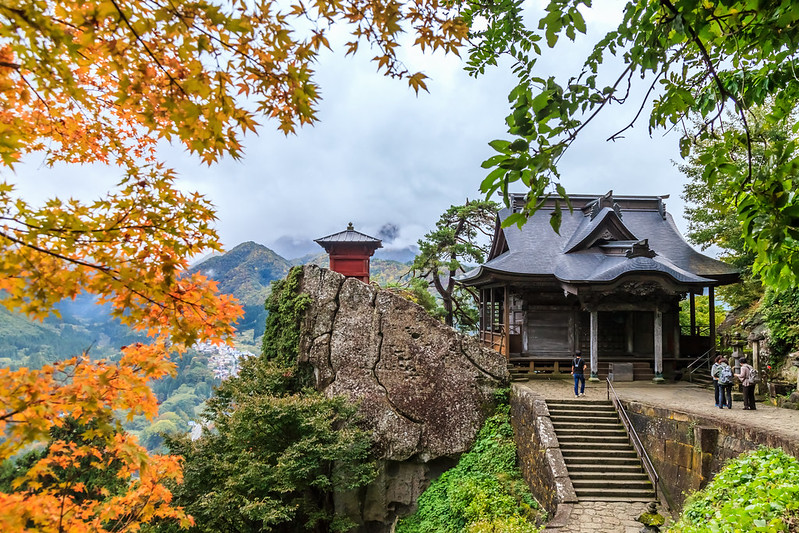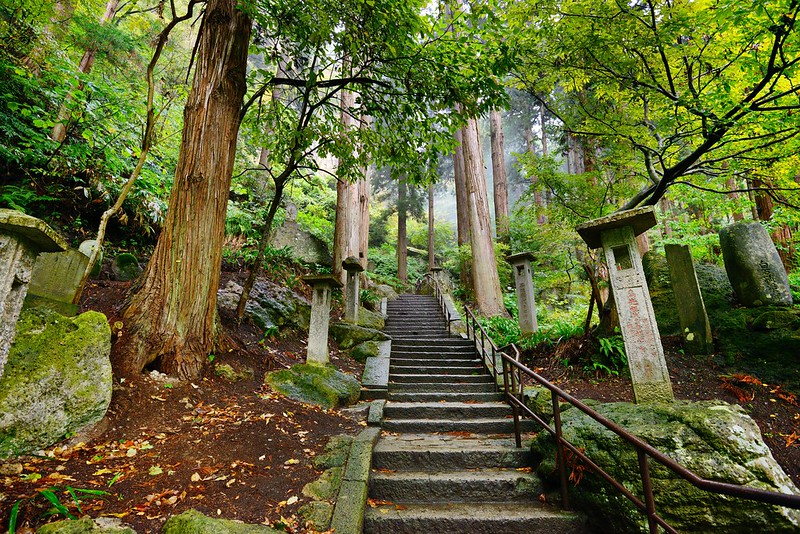
Finding Beauty and Tranquility in Yamadera
Yamadera (山寺) is a Japanese temple located in the northeast mountains of Yamagata City, Yamagata Prefecture. The picturesque temple is built on a steep mountainside that allows you a spectacular view of the valley below. Yamadera, literally meaning “mountain temple” in Japanese, is only a 20-minute train ride from the Senzan Line, and the mountain base leading to the temple is a short walk from the station with dozens of shops and restaurants lining the streets. Its magnificent view, history, and cultural relevance have made Yamadera one of Japan’s nationally-designated Places of Scenic Beauty and Historic Sites.
Walking trail to Yamadera Mountain Temple
Yamadera was founded in 860 by the priest Ennin (Jikaku Daishi, 794–864 CE) of the Tendai sect and was officially called Risshakuji. During the time Ennin was in China, Emperor Wuzong of Tang was responsible for the Great Anti-Buddhist Persecution of 842–846 that led to the deportation of Ennin to Japan in 847. Ennin became the third abbot of the Tendai sect at Enryakuji near Kyoto, where he built buildings to store the collection of written works and other religious articles he brought back from China. His dedication to Buddhism and the study of the Tendai school and its monastic complex gave the sect recognition in Japan. The main contributions of Ennin were the strengthening of the Tendai tantric Buddhist tradition and the nenbutsu (Pure Land recitation practices) and laying the foundation for the Pure Land movements during the Kamakura Period (1185–1333).
Stone statue of worship path
Most of Yamadera was destroyed during the warring states period in the early 16th century but was rebuilt in 1543, headed by the Buddhist monk Enkai. The Edo Period (1600–1868) saw a solid institution in Yamadera with a fiefdom producing 1,420 koku (equal to one cubic meter of rice).
Yamadera’s main hall (Konpon-chūdō) was built during the Muromachi Period (1333–1568) by the then lord of Yamagata, Shiba Kanetori. Made of beech wood, it is considered a cultural asset of Japan. The ritual fires that still light the temple were brought from Enryakiji and have been burning for centuries as an eternal flame. One must climb a thousand steps lined with thick cedar trees to get to the mountaintop where the temple awaits. All these make Yamadera truly a sight to behold. There are few places that leave such an imprint in an otherwise modern and busy world.
